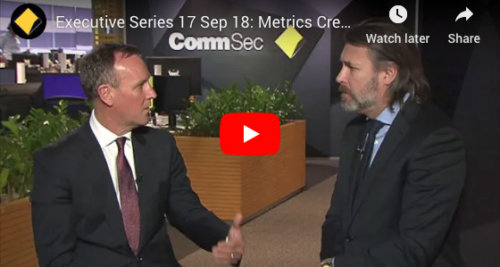How private debt can provide superior risk-adjusted returns and reduce portfolio volatility
For investors, the prospect of preserving capital whilst achieving attractive returns might seem too good to be true.
After all, don’t higher yields equate to higher risk?
While no asset is entirely risk-free, private credit offers the opportunity for investors to achieve superior returns in an asset class that has a low correlation to bonds and equities.
Also known as private debt, private credit is lending to businesses and projects by lenders who are not banks, typically providing loans rather than buying publicly-traded bonds or notes.
Private credit managers directly negotiate lending terms to suit the borrower’s bespoke needs and to protect the lender.
“Since 2008 we have seen a steady increase in demand for non-bank capital, as banks withdraw lending capacity,” says Andrew Lockhart, managing partner of private credit specialist Metrics Credit Partners.
At the same time, investors are appreciating the beneficial ‘unique characteristics’ of private credit that result in regular income even during market turmoil.
As with a bank lender, a private creditor receives fees (such as establishment fees) and interest at defined times, with a stipulated maturity.
In contrast, share dividends can be lowered or cut altogether when conditions sour.
While many companies – including the banks – reduced their dividends during the pandemic, well-managed private debt funds continued to deliver consistent monthly income.
Investors often lump corporate bonds and private loans into the one basket, but there are key differences.
Unlike bonds, private credit has low liquidity and is usually held to maturity by the same lender.
Corporate bonds also usually provide an agreed ‘coupon’ – interest – and have a set maturity. Private loans are based on a floating base rate such as the bank bill swap rate, plus a margin to reflect the quality of the borrower.
So while the loans are intended to be held to maturity, the pricing responds to shorter-term interest rate movements and thus provides an inflationary hedge.
“If interest rates rise, your income should also rise, which acts to protect the capital of your investment,” Lockhart says.
To protect against eroding income from interest rate falls – a likely scenario in the next couple of years – lenders will often negotiate a floor base rate.
Loan losses in Australia have been extremely low.
Reserve Bank of Australia data shows the major bank’s net business write-offs peaked at 0.67 per cent in March 2010, when the recovery from the global financial crisis was under way.
Losses are now well under 0.01 per cent.
Lockhart notes that unlike most shareholders or bondholders, private lenders can compel companies to disclose comprehensive financial and management data unavailable to bondholders or shareholders.
Armed with that confidential information, they can proactively act to protect investor capital by levering security and covenant requirements (such as how many times earnings should cover interest payments) afforded to them in loan instruments.
They might compel the borrower to execute cost savings, sell assets or raise equity to create a buffer for creditors.
In the case of sub investment grade companies, covenants compliment fixed and floating charges over the borrower’s assets, providing a lender with the ability to proactively engage with the borrower where necessary.
“That means all of the company’s assets are encumbered and pledged as security to the lender,” Lockhart says.
The lender may also require personal guarantees to compliment mortgage security over land and buildings.
Typically, private credit is held by funds that have a broad exposure to borrowers, across many industries and with diverse credit profiles. This further protects investors against the risk of a single-name failure.
Currently, conservative private credit funds are delivering returns of around 7-8 per cent, with higher-yielding funds managing 10-12 per cent.
Lockhart describes private credit as a “compelling investment in most market conditions which should be part of a diversified portfolio to achieve capital preservation and attractive risk-adjusted returns.”
The key, of course, is to have a well-diversified portfolio managed by parties who understand the heterogeneous nature of the loans.

Other News
Metrics Innovate Reconciliation Action Plan
We are proud to share our second Reconciliation Action Plan (RAP), reaffirming our commitment to truth, healing and unity. We…
Metrics response to ASIC’s report on Advancing Australia’s Evolving Capital Markets
Attributable to Metrics Group CEO and Managing Partner, Andrew Lockhart: Metrics Credit Partners (“Metrics”) welcomes ASIC’s roadmap to promote strong,…
INSIGHTS
MCP Income Opportunities Trust (MOT) lists on ASX
Sydney, 29 April 2019: The Trust Company (RE Services) Limited (ABN 45 003 278 831) (Responsible Entity) is the responsible…
MCP Master Income Trust wins Lonsec Listed Fund Award
The award came a year after MXT was listed on the Australian Securities Exchange






